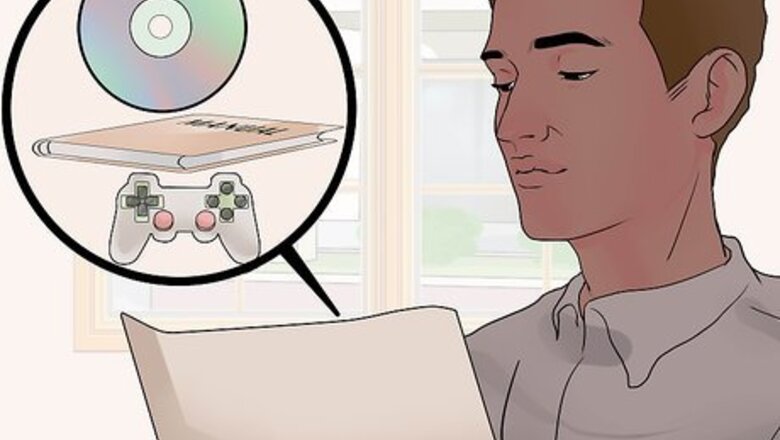
views
Formatting Your Instructions
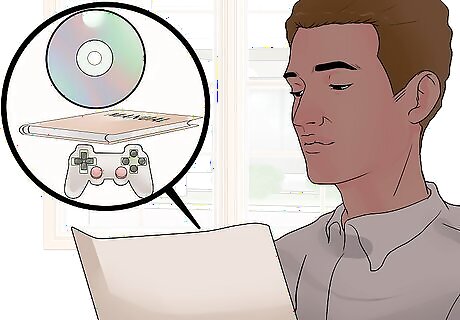
Look at the instruction manual from some of your favorite games. Whether you’re writing your game rules on a notepad, whiteboard, or printing in a pamphlet, take a look at how your favorite games format the instructions for inspiration and examples. Take notes of how other instructions are formatted. Notice the hierarchy of the information explained. How the structure allows you to see the big picture. When writing your own rules try to follow a similar format. Make a checklist of sections to include that you see in other instruction books. You can even emulate the style if you want.

Write your instructions to be read aloud. When you write the instructions and information of your game, assume that people will be reading aloud. One person usually reads the instructions to the group. Have the tense reflect someone reading out loud during the play of the game. This means that your tense and tone should default to present tense, active voice, and be pithy, or quick. Whether you’re explaining the game that you created for the first time, or someone else is explaining it with your rulebook, you want to make the text quick and easy to understand. For example, if you have a board game about two countries at war, you might explain the objective like: “You are a member of one of the two countries at war. You are assigned a role to aid your country. The goal of the game is to work together to defeat the enemy country in one of three ways: You can win by destroying the country through war, assassinating the country’s leader, or being the first country to go into space.” With simple descriptions and an active voice you can easily get a good amount of information out. Players now know the objective and winning methods of the game.
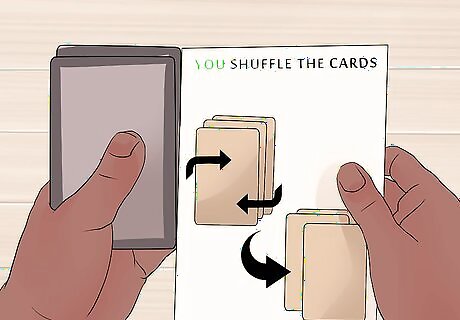
Use the second person. Instead of saying “When a player…” or “The player…” Try saying “When you…” as much as possible. This will help you to convey the rules of your game. The second person helps you when reading, as well as other players learning the game in the future. There are times when you don’t have to use the second person. When describing what certain objects or tokens may do for a player, you can use “The player…” if it makes more sense. To avoid situations where using the second person sounds awkward, remember to try and use active voice. Instead of “The cards are shuffled.” Say “You shuffle the cards.” This active voice also gives the players strong direction of what to do.

Make game terms easy to find and understand. When using a game term, such as a type of card, action, piece, etc., reference it right away. Keep it brief and to the point. If the explanation needs more depth, add a notation, then include a separate section explaining it further. For example, if you mention that one way to win is to kill the enemy’s leader, state where you can find the instructions on how to do this. Add separate section that explains this in more detail. If you have room, you can briefly explain the term before continuing on. Never include a term that new players won’t understand without explaining it. Always show players where to find more information on the term.
Creating Your Instructions

Explain the concept or goal of the game. Give your players a preview and overview of how the game works. You may even want to start with a brief summary of the game or the game world's history. It should be brief and help players understand the objective that follows. For example, if your game centers on warring countries: The summary will explain why the two countries are at war. They used to be a single country, but one part rebelled. Now both countries are using all available resources to win the revolution. The game's objective is to win your side's revolution.
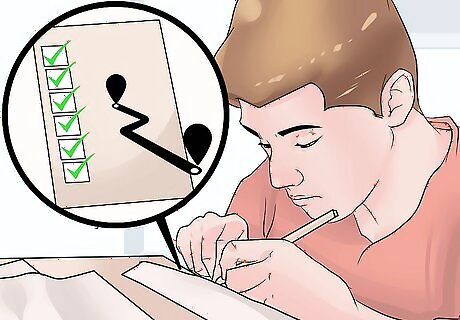
Write your instructions in order and in context. When actually writing your game instructions in whichever format you have chosen, do it in order. Writing in order means that you follow a logical path of explaining the mechanics of the game. You may want to start with a brief summary of the game. Then include up at the top which pieces are included. Then move on to the objective, the setup, how the play operates, and what each piece or character does. After explaining how you win, you may include more sections that deeper explains objects, moves, or player types you touched on earlier. Your instructions should work like a book or story. You start with a table of contents. After that you may have a preface or forward, something that outlines your game. This can be your objective. When explaining the rules and different parts of the game’s flow, do it in the order that it will happen. It should follow a beginning, middle, and end. You'll also want to include a brief section early on that details how many players can play, and the age range. Explain the setup before you explain the start of play so that players can set up the board. When the players finish reading about the setup, the next section should explain how to start playing. Following, you will have a style of play. For example, if you have a turned based game, next explain how the turns work. If the turns lead to combat, you will next explain combat and the components of that.
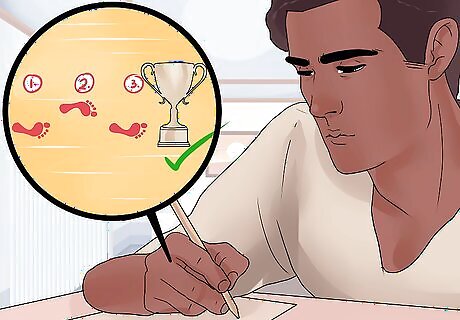
Group like information together. Make sure that there are sections of your game instructions that are easy to understand and follow. You shouldn’t start explaining how to move on your turn and then go on a tangent on what each possible outcome of every move is. Write your instructions so that players can understand how to play in the easiest way possible. Put all the ways to score points together. Explain the turns in one section. If you are explaining how a turn works and then need to explain that at the end of every turn a player draws one type of card, that's’ ok. You can even explain the types of cards the player may draw. But refer the reader to a separate section that details what each card means and does.
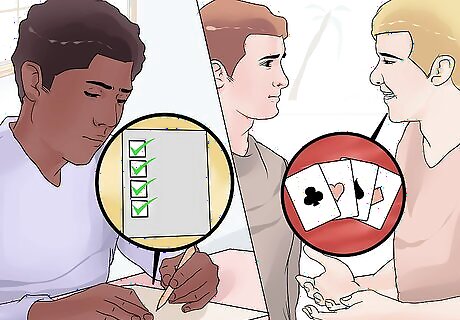
List and explain all objects in the game, individually and in depth. You may have already explained how some of your game’s contents and objects work when detailing the game's rules and objectives. Use this section as an encyclopedia to further explain all objects. Go further in depth here than when you mentioned objects in earlier sections. It’s crucial that the player understands what the cards, pieces, units, etc., represents. Consider drawing or sketching your pieces, even if this is just for fun, to serve as a visual aid. Separate the objects and group like ones together.
Finalizing Game Instructions
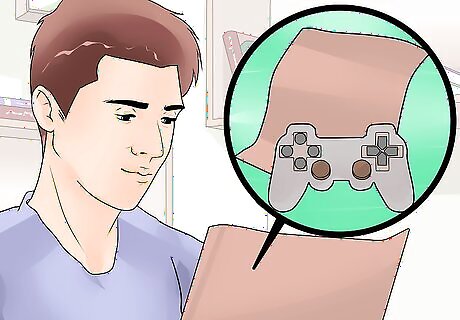
Read over your game instructions. Wear the hat of someone who doesn’t know anything about your game. Be honest with yourself and take note of how well you would understand these instructions. Do you not explain the objective well enough? Are you using second person and active voice consistently? Do you understand how the setup, turns, and winning work? If there are trouble spots make note of these areas and revise. Your instructions should be easy to understand so people can play your game as soon as possible.
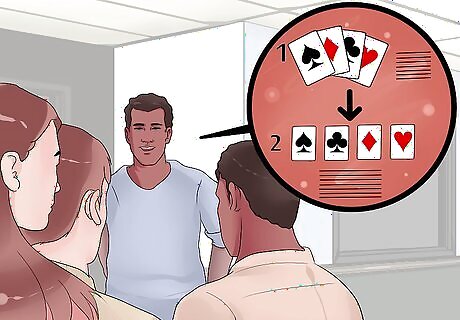
Show some examples. If your game has a turn-based structure or some form of turn-taking, show an example of how turn should go. This example should cover most if not all of the scenarios and interactions between the game elements, if possible. You may need to include multiple turns to fit all the interactions. Use notations to explain this part of the game. Add a separate section that goes into fuller detail, if needed.
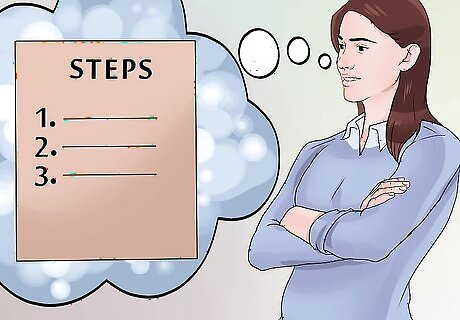
Consider including strategy tips. Sometimes the descriptions of the rules or how the board is setup can seem hard to understand. In order to avoid players becoming disinterested, help your players by including some tips on strategy. List any and all special scenarios that might otherwise confuse the player. Include strategic methods for winning in the scenario. This step can either be really quick and easy; or it can be the bulk of your explanation, depending on how your game works. This step is really a judgment call. But if you suspect that a certain aspect of the game might be unclear, take the time to fully explain the outcome of that scenario.
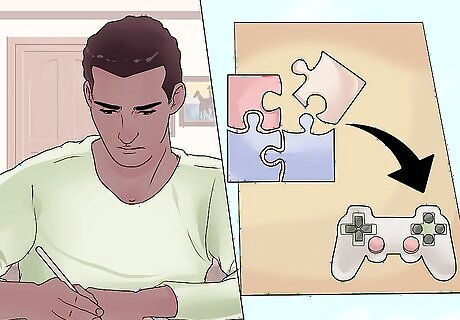
Include any extras or possible game variants at the end. All the instructions and elements that you didn’t cover before should be presented after the main instructions. If your game can be played alternate ways, list the alternate ways here. The main instructions explain the operation of the game. If your game includes other elements that aren’t used specifically for the main game, take the time to explain those here.

Format your pages so that people can easily read the instructions. No matter where you are writing your instructions, and how you will present the final ones, make sure that your pages or documents are easy to read. Formatting includes the layout and order of the instructions. But it also includes the kind of font and spacing you include. If you are typing, don’t pick a crazy font that’s hard to read. If you are hand-writing, write legibly. Don’t clump all your instructions into block paragraphs. Use bullet points when you can. Break up the text with a visual aid if possible. Have someone read over your game instructions. Get a second pair of eyes to read your instructions and check for any errors. This person can also tell you if your instructions make sense and where to better explain things.




















Comments
0 comment